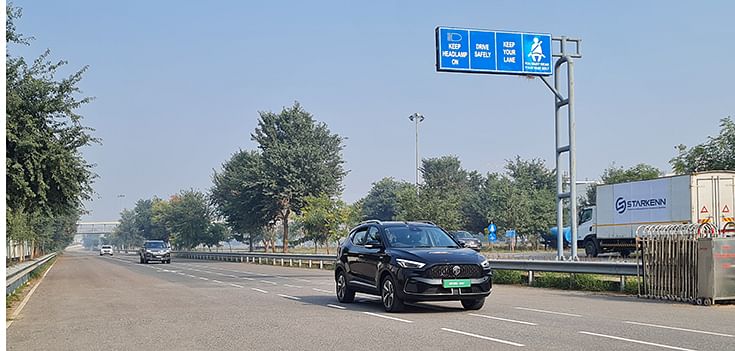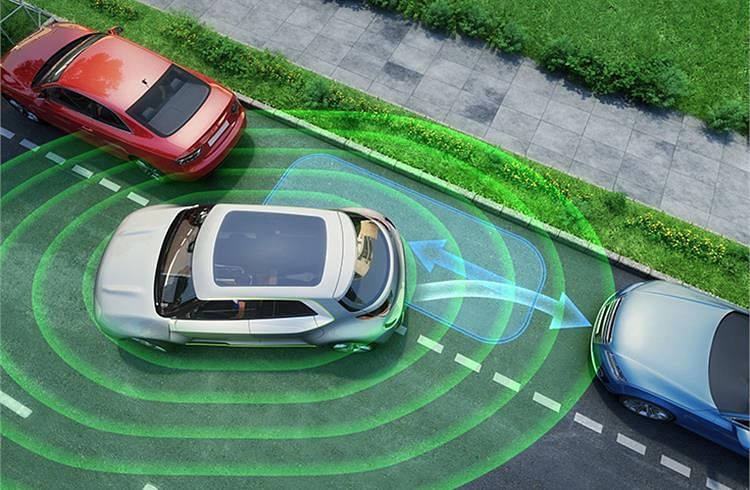Expert view: why policy, standards and infrastructure are key to drive ADAS in India
The panel discussion at the ICAT ADAS Show in Manesar shed light on the need for Indianised solutions and regulations for seamless incorporation of advanced safety technologies into vehicles on Indian roads.
The continuous advancements in vehicle safety technologies and the increasing foray of advanced driver assistance systems or ADAS functionalities in vehicles, particularly passenger cars, promises to prevent accidents and improve road safety in the country.
However, unlike in the West, implementation of ADAS features in vehicles sold in India is at an infancy, and majorly faces the key challenges of sub-standard road infrastructure with lack of standardised road signages for the seamless functionality of the technology, as well as poor driver behaviour of people behind the wheels.
To drive awareness among citizens as well as the automotive ecosystem, the International Centre for Automotive Technology (ICAT), organised the ADAS Show at its second site in Manesar, Haryana, on December 7. The event was attended by over 1,000 visitors, and 45 companies including Honda Cars India, MG Motor India, Valeo, Uno Minda, Dassault Systemes and Rosmerta Technologies showcased their solutions.
 Adaptive Cruise Control (ACC), which is a key Level-2 ADAS functionality, demonstrated at the ADAS Show wherein a lead vehicle is followed by the trailing vehicle which accordingly adjusts its speed.
Adaptive Cruise Control (ACC), which is a key Level-2 ADAS functionality, demonstrated at the ADAS Show wherein a lead vehicle is followed by the trailing vehicle which accordingly adjusts its speed.
Customising ADAS for India
In a panel discussion on the topic of ‘Policy and Infrastructure Perspectives on ADAS’, industry experts discussed the need for Indianised solutions and regulations for the seamless incorporation of advanced safety technologies into vehicles on Indian roads.
According to Dr Hanif Qureshi, IPS, Joint Secretary, Ministry of Heavy Industries, “While the introduction of any new technology requires standards to be in place, the question here lies what the standards should be. Our road conditions are quite different from other parts of the world, and we cannot implement standards from other nations.
“While there are no standards enforced at present, it is an area that needs to be developed,” he said while adding that India is primarily a small car market, and with ADAS being an expensive technology, industry and government must decide what features of ADAS will be useful for the country.
Saurabh Dalela, Director, ICAT said: “While standards such as the ECE-159, 160, and 161 exist in Europe, we must Indianise these standards as per the Indian road conditions.”
Speaking about the industry readiness in terms of the testing infrastructure for ADAS, Dalela said, “The first two levels of ADAS assist the driver, while from the third level onward, the vehicle starts taking control away from the driver. With respect to Level-1 and Level-2 ADAS features, the government's forward thinking from the early 2000s, has ensured that there is adequate infrastructure, including that at ICAT, to develop, test, and validate ADAS solutions for the Indian market.”
“However, going to Level-3 ADAS and beyond will take a lot of time, and even there, the government has initiated work and started planning the way forward. It would entail having a test track that mimics a cityscape and incorporates its nuances such as pedestrians, motorists, and traffic,” he added.
“ADAS calibration is about taking over the cognitive ability of the human being and while it requires standards to ensure safety, the flip side, however, is that while we limit our focus on devising certain standards, there could be several other use cases that evolve,” said Dr Tapan Sahoo, Executive Director, Executive Director, Engineering, Maruti Suzuki India.
“Therefore, liability is going to be a key challenge that needs to be addressed from a policy standpoint. As ADAS matures further, the big challenge is component localisation, as the cost of the ADAS technology is quite high. The use cases for ADAS in India are so unique that India provides the potential of being the test bed of ADAS solutions for the world,” he added.
According to Ganesh S Rao, Director & Head - R&D ADAS Engineering and Autonomous Mobility, Continental India, “The current road infrastructure in India cannot see plug-and-play ADAS solutions from overseas becoming successful, and this is where Indian talent comes to the picture to solve these challenges by developing customised solutions that are tested and validated in the Indian road environment.”

Valeo, which has a strong presence in India with 8 production sites displayed its ADAS expertise and engaged in discussions about the future of ADAS in the Indian automotive landscape at the ADAS Show at ICAT on December 7.
Localisation of ADAS technology vital for speedier adoption
Given the sensitive nature of the Indian consumer towards cost, the localisation of ADAS technology is crucial to drive its adoption and deepen penetration in the domestic market. While automotive companies are working towards calibration of ADAS for the Indian market as well as innovating cost-effective solutions for the country, the government push in the form of production-linked incentive or PLI scheme is also acting as a key enabler.
According to Dr Qureshi, “The government's focus is towards advanced automotive components, and that is the reason schemes such as PLI and FAME are important. ADAS is incentivised under the Rs 26,000 crore Auto PLI scheme which sees 85 applicants, of which 67 are automotive component companies. ADAS components are one of the key technology elements being incentivised under the PLI scheme.”
Nirmal K Minda, Chairman, Uno Minda is of the opinion that “the PLI scheme is helping the industry to localise advanced components by doing backward integration. With India being the fastest growing economy in the world, there is a big opportunity for India going forward, and all automotive and electronics majors are looking at the country.”
“While economies of scale will play a key role, the ADAS strategy varies from company to company. We are going through a disruptive phase in the automotive industry for the last five years, and therefore, it becomes crucial to invest into R&D and continue innovating. I would urge component manufacturers to adopt a startup mindset, create proof-of-concepts and move forward,” Minda said.

Need for cybersecurity, collaboration
Given the complexity of the technology as well as that of the Indian road and traffic conditions, it is an uphill task for the government and industry to deploy ADAS in the Indian landscape. With the role of connectivity, such as 5G technology, being crucial in the ADAS implementation, cybersecurity becomes a key aspect to ensure a safe rollout of the safety-enhancing technology.
“While India is still some time away from solving issues related to the liability aspect of ADAS that will only come with the technology's Level-3 functionality, cybersecurity is an extremely crucial area, and must be ensured to the fullest extent,” said Dr Qureshi.
According to Dalela, “We will be requiring a personal Data Protection Act, and we must be quick on this, otherwise India will miss the bus. Given India's market size, this is going to be critical, and we would need to integrate up to three ministries - MHI, MoRTH, and the Ministry of Electronics and IT.”
The panelists unanimously agreed on the need for increased cosmetic collaboration among stakeholders to further the adoption of ADAS in India. “The industry, government and academia must come together, and we should see professors getting into industries, and the other way around. At ICAT, we have been signing various MoUs and have an incubation centre at our facility to foster innovation” said Dalela.
While Dr Sahoo highlighted that the Society of Automotive Engineers (SAE) is bringing together the academia and industry, according to Continental India’s Rao, “While OEMs and component manufacturers have their individual tie-ups with the academia, time has come for a common platform where the industry could collectively partner the academia to foster open innovation. We need to solve the unique challenge of deploying ADAS in India, and need to talk more about it.”
“We must conduct research on ADAS solutions, and develop customised solutions, with a global potential,” Rao pointed out. That’s a growth mantra India Auto Inc is already deploying in a number of areas with considerable success.
ALSO READ:
Developing ADAS for Indian conditions
'We are extensively testing ADAS in India': Maruti Suzuki’s CV Raman
All Hyundai models in India to come with ADAS features by 2025
RELATED ARTICLES
Cosmo First diversifies into paint protection film and ceramic coatings
The Aurangabad, Maharashtra-based packaging materials supplier is leveraging its competencies in plastic films and speci...
JSW MG Motor India confident of selling 1,000 M9 electric MPVs in first year
The 5.2-metre-long, seven-seater luxury electric MPV, which will be locally assembled at the Halol plant in Gujarat, wil...
Modern Automotives targets 25% CAGR in forged components by FY2031, diversifies into e-3Ws
The Tier-1 component supplier of forged components such as connecting rods, crankshafts, tie-rods, and fork bridges to l...






 10 Dec 2023
10 Dec 2023
 9463 Views
9463 Views





 Autocar Professional Bureau
Autocar Professional Bureau




